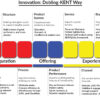
The healthcare market in India is at a crossroads of transformative growth with the value at $638 billion in 2025 from $400 billion in 2024, reveals Way2Wealth Brokers Pvt. Ltd. It is a magnificent growth that accentuates the significance of healthcare in the economic and social development of India. The market has been a benchmark of the country’s capability to attain the twin missions of accessibility and quality in healthcare and it is the prevailing growth projections that present both gigantic opportunities and challenges in the coming times.
At the centre of India’s healthcare system is the hospital segment of the market that accounts for nearly 80% of the total healthcare spending. The segment is expected to record a compound annual growth rate (CAGR) of 8% between 2024 and 2032 and will in the long run achieve a value of up to $194 billion. Hospitals will benefit most from rising healthcare spending spurred on by demographic drivers, shifts in epidemiological trends, and rising gaps between demand and supply of hospital bed capacity. India’s population of 1.42 billion is continuously on the rise and is kept in tandem by rising incidences of chronic diseases, higher life expectancy rates, and a growing middle class with higher disposable incomes. Such drivers individually and collectively are stimulating ongoing demand for hospital services in the urban and semi-urban markets.
One of the most near-term structural issues is the shortage of hospital beds. As per Way2Wealth, a report by Knight Frank and Berkadia predicted a shortage of healthcare infrastructure in the nation of 2 billion square feet. India has a paltry bed-population ratio of only 1.3 beds per 1,000 citizens against the World Health Organization recommendation of 3 beds per 1,000.Closing the shortfall would require another 2.4 million hospital beds with the associated enormous capital outlay, land development, and investment opportunities in the near future. Not only is the infrastructure deficit a logistically challenging situation but also a strategic opportunity for both domestic hospital chains and foreign investors.
The supply-demand imbalance is not limited to land and physical assets but also to human capital. India’s healthcare system is already the nation’s largest employer with 7.5 million jobs in 2024. But against growing demand from abroad and at home, the demand for healthcare professionals is likely to double by 2030. Doctor and nurse shortages and allied health professionals are no rare occurrences in India but symptomatic of a world crisis. But where India has a benefit is in the production of vast quantities of English-speaking, internationally mobile professionals. Consequently, doctors, nurses, and paramedics from India are gaining traction in developed nations confronting demographic bulges and labour shortages. While this brings export markets for Indian talent to the fore, it has the danger of worsening the situation back home unless skill-building in medical and nurse education is followed through meticulously.
Their economic implications are vast. To healthcare investors and hospital chains, the supply deficit is growth prospects in metros and other tier-2 and even tier-3 locations. Chain hospitals enterprises like Manipal Hospitals and Apollo Hospitals are already expanding quickly through acquisition and greenfield models of expansion. Regional players like KIMS Hospitals and Kauvery Hospitals are also upscaling through robust brand loyalty in the region. The market forces favour large-scale tertiary care centres but favour specialty hospitals in cardiology, oncology, orthopaedic centres of excellence and in mother and child hospitals that can achieve higher revenue efficiency per physician and higher financial margins.
At the same time, unequal growth will be the challenge that policymakers will have to grapple with. Private investment concentration in the urban centres has the risk of under-serving rural India. More than 65% of the population of India is still in rural India, where the health infrastructure remains sporadic. Public hospitals and government schemes like Ayushman Bharat are invaluable in making up the shortfall but issues in funding and execution remain. In the absence of adequate public-private partnerships, healthcare expansion of India might continue to be skewed in favour of the affluent population and against the purpose of universal coverage in health.
Another factor defining the segment is technology. Digital health tools adoption, telemedicine, and artificial intelligence adoption has the capability of filling the access gaps quickly and efficiently, particularly in small townships. There has been a surge in the COVID-19 pandemic in the teleconsultation space and future growth is aided by rising smartphone penetration and government support through e-health missions. Artificial intelligence in imaging and predictive analytics and electronic health records integration are increasingly transitioning from pilot phases to mainstream implementation. Hospitals benefit from the technologies not only in terms of increased efficiency but also in reducing the shortfall in the workforce through task-shifting and decision support. Health-tech startups investors are putting a great bet on this trend and India has emerged into one of the fastest-growing digital health markets in the world.
From a job market perspective, doubling the demand for healthcare professionals by 2030 is a challenge and an opportunity in one. India needs to drastically grow the medical and nursing education capacity in order to take care of the domestic demand and seize the global demand opportunity. Regulatory reforms will be needed to grow the number of medical colleges, raise the quality of training, and infuse new skill sets such as digital health literacy into the curricula. The job multiplier effect of the sector cannot be underrated; healthcare jobs support ancillary industries such as pharmaceuticals, diagnostics, and medical devices and therefore more deeply penetrate the economy.
Going forward, the growth of the healthcare sector in India will be shaped by a mixture of infrastructure development, talent creation, adoption of technology and innovation in finance. Property and hospital construction in the healthcare space will be a main driver of the capital markets. Government policy will play a central role in making growth inclusive in order to balance private gain with public health needs. Penetration of insurance has been low in the past in India and must expand so that a rising population is in a position to pay for care without catastrophic out-of-pocket exposure. Investors in the meantime must consider the different business models at work: efficiency- and margin-driven specialty hospitals compared with massive multi-specialty chains that promise to deliver through the logic of scale and access.
Finally, India’s healthcare market is set to become one of the world’s largest and most dynamic segments of the economy by the close of this decade. Forecast growth to $638 billion in 2025 and ongoing CAGR of 8% in hospital revenues reinforce the industry’s promise. But below the top-line figures is a complicated reality of infrastructure gaps, talent gaps, and urban-rural inequity. To the investor, the prospects are vast but so too are the execution risks. To the policymaker is the task of making growth lead to more access and equity in the broader scheme of things. And for the healthcare provider is the task of striking the right balance between the bottom line and the bottom billion in terms of staying true to the mission of healing a billion lives while scaling the business appropriately.
Dr. Prahlada N.B
MBBS (JJMMC), MS (PGIMER, Chandigarh).
MBA in Healthcare & Hospital Management (BITS, Pilani),
Postgraduate Certificate in Technology Leadership and Innovation (MIT, USA)
Executive Programme in Strategic Management (IIM, Lucknow)
Senior Management Programme in Healthcare Management (IIM, Kozhikode)
Advanced Certificate in AI for Digital Health and Imaging Program (IISc, Bengaluru).
Senior Professor and former Head,
Department of ENT-Head & Neck Surgery, Skull Base Surgery, Cochlear Implant Surgery.
Basaveshwara Medical College & Hospital, Chitradurga, Karnataka, India.
My Vision: I don’t want to be a genius. I want to be a person with a bundle of experience.
My Mission: Help others achieve their life’s objectives in my presence or absence!
My Values: Creating value for others.
Leave a reply
















*Dear Dr. Prahlada N.B Sir,*
Your blog post on the healthcare system in India is truly enlightening! 🌟 The way you've dissected the growth potential and structural issues in the sector is both thought-provoking and informative. Your analysis highlights the pressing need for infrastructure development, talent creation, and technology adoption to bridge the gaps in healthcare access and quality.
Key Takeaways 📝
– *Infrastructure Deficit*: The shortage of hospital beds and healthcare infrastructure, particularly in rural areas, is a significant challenge 🏥
– *Talent Gap*: The shortage of healthcare professionals, including doctors and nurses, is a pressing issue that needs to be addressed 👨⚕️
– *Urban-Rural Inequity*: The disparities in healthcare access and quality between urban and rural areas are a concern that requires immediate attention 🚨
The Role of Technology and Innovation 🌐
Your insights on the importance of technology and innovation in addressing these challenges are particularly noteworthy. The adoption of digital health tools, telemedicine, and artificial intelligence can help improve healthcare outcomes and bridge the access gap.
A Call to Action 📣
As you've emphasized, the growth of India's healthcare sector will require a multifaceted approach that addresses infrastructure, talent, and technology. Policymakers, investors, and healthcare providers must work together to create a more inclusive and equitable healthcare system.
Kudos to You 👏
ReplyYour thought leadership and expertise in the healthcare sector are truly commendable, Dr. Prahlada N.B Sir. Your blog post provides valuable guidance for stakeholders seeking to improve India's healthcare system.